Table of Contents |
|---|
Setting Up the Template
Getting Started
In this tutorial ExcelTemplate is being used to populate data and ExcelApplication is being used to format the data. This part of the tutorial will make use of data marker modifiers.
Using Modifiers
The template should resemble this upon completion: 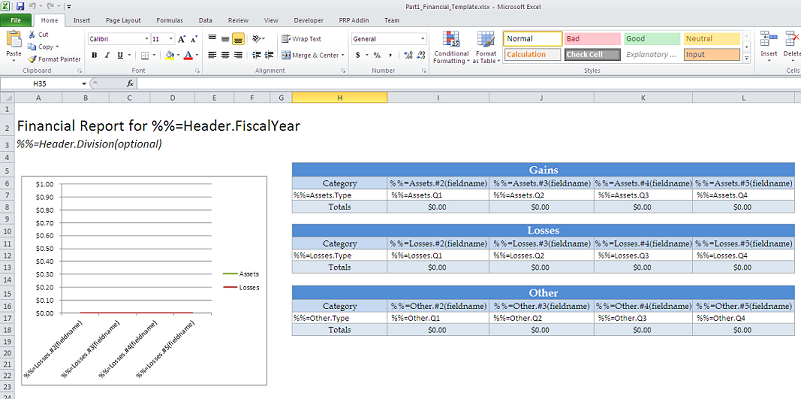
This template uses two different data marker modifiers - fieldname and optional.
The fieldname modifier shows the fieldname of the column being bound. It will not bind any additional data. It is used like this:
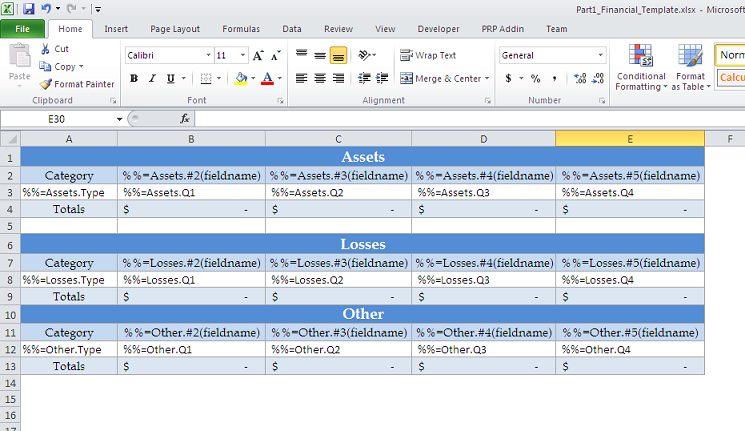
The optional modifier allows that data marker to be ignored on data binding. If you have a column that may be empty, the optional modifier allows you to bind the data set regardless. It is used like this:
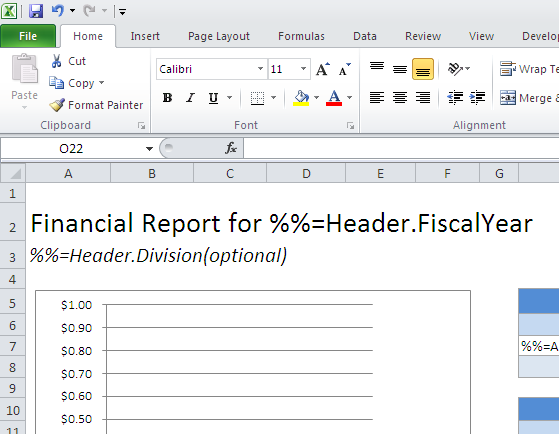
Conditional Formatting
ExcelTemplate will persist conditional formatting in a template. In this tutorial, conditional formatting is applied to the "Other" table. It sets negative numbers to be red and bold. 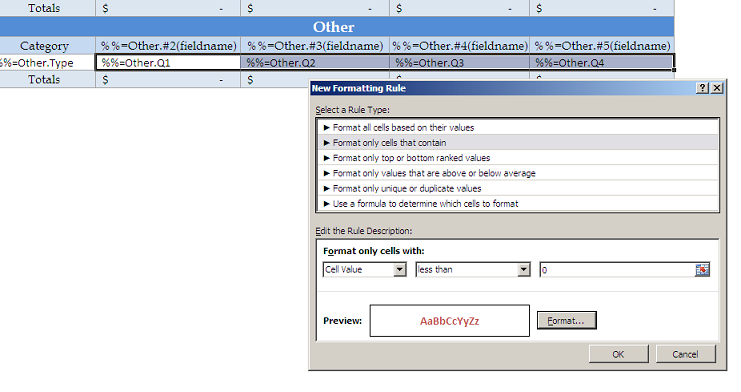
Adding an ExcelWriter Reference in Visual Studio
Create a .NET project and add a reference to the ExcelWriter library.
- Open Visual Studio and create a .NET project.
- The sample code uses a web application.
- Add a reference to SoftArtisans.OfficeWriter.ExcelWriter.dll
- SoftArtisans.OfficeWriter.ExcelWriter.dll is located under Program Files > SoftArtisans > OfficeWriter > dotnet > bin
Writing the Code
1. Include the SoftArtisans.OfficeWriter.ExcelWriter namespace in the code behind
2. In the method that will run the report, instantiate the ExcelTemplate object.
3. Open the template file with the ExcelTemplate.Open method.
4. Create a DataBindingProperties object. Although we won't be changing any of the binding properties, a DataBindingProperties is a required parameter in all ExcelTemplate data binding methods.
Data Binding
1.Get the data for the Assets, Losses, and Other datasets
These calls are to a helper method GetCSVData that parses the CSV files and returns a DataTable with the values.
If you are following in your own project and would like to parse the CSV files as well, you will need to:
- Add a reference to
GenericParsing.dll - Include
GeneringParsingat the top of your code. - Add the
GetCSVDatamethod that can be found in the sample code.
2. Create the datasets for the header row. Recall the optional modifier for the "Division" tag. This tutorial will not bind any data for that tag to demonstrate the function.
3. Use ExcelTemplate.BindData to bind the data for the Top and Details Sales data sets.
4. Use the ExcelTemplate.BindRowData method to bind the header data to the data markers in the template file (i.e. %%=Header.FiscalYear).
5. Call ExcelTemplate.Process() to import all data into the file.
We are not saving the file, since we will be using ExcelApplication to access the file and post-process.
Without the post processing, the populated file will persist the column width and heights. It should look something like this: 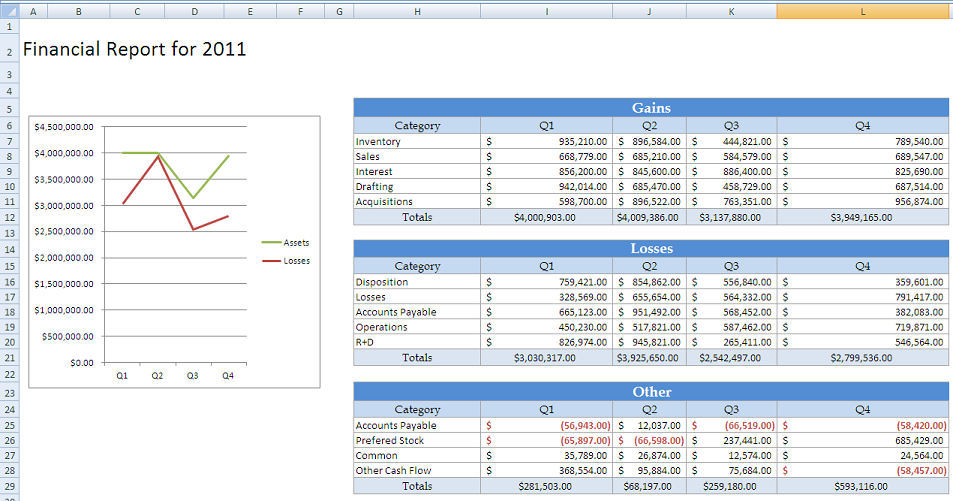
Post-Processing
1. In the post-processing method, instantiate the ExcelApplication object:
2. Open the populated file via the ExcelTemplate object. The file will open as a Workbook object
3. Access the first Worksheet.
4. Call Area.AutoFitHeight() and Area.AutoFitWidth() to set the column and row height correctly. In this snippet, the area is Worksheet.PopulatedCells, which returns an area containing all populated cells.
5. Finally call ExcelApplication.Save to save the final file. This example streams the file using the page response.
The final output should look something like this 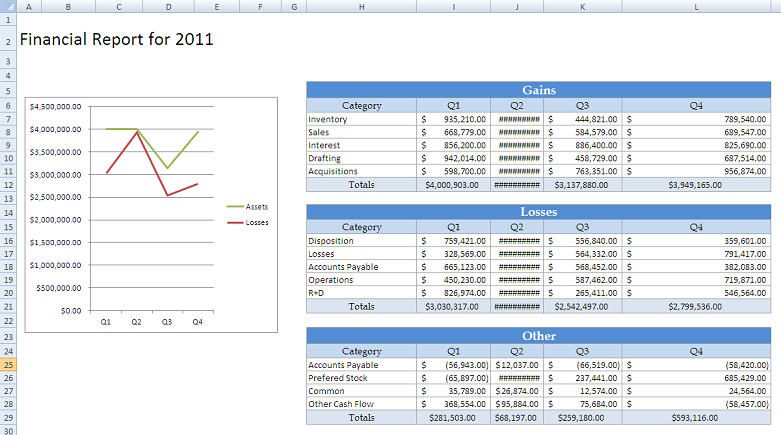
Final Code
Downloads
TBA
